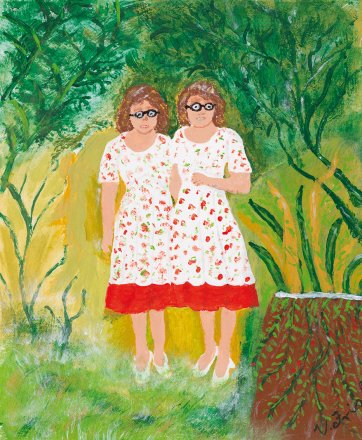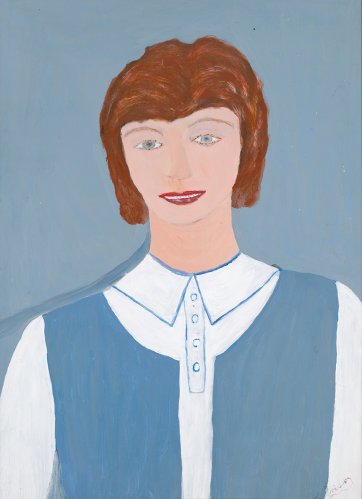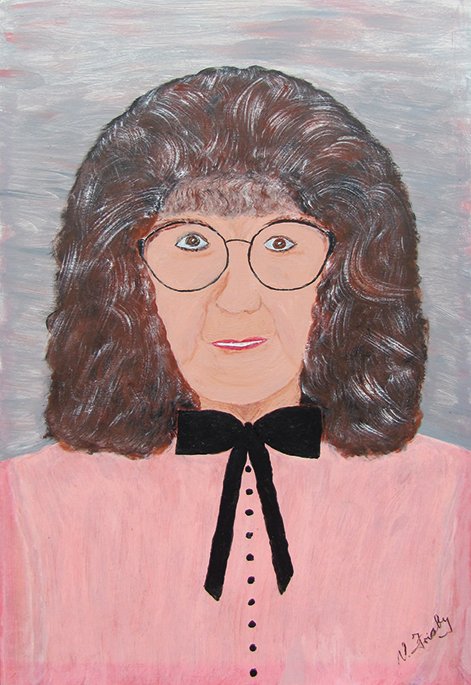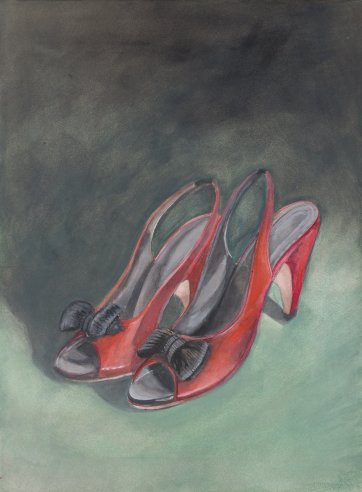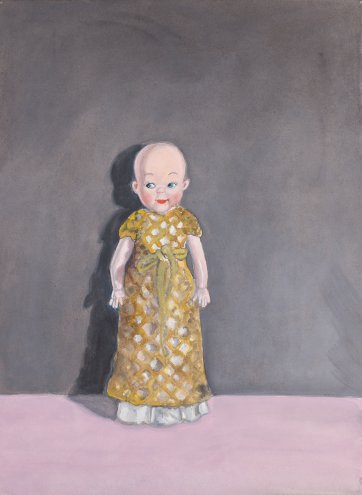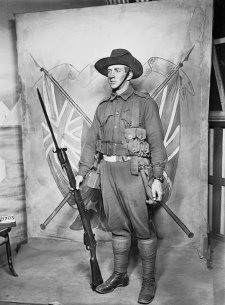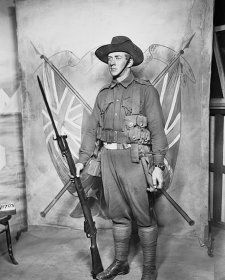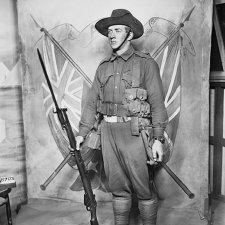Through other family members over the years, I have been able to put together a little biographical information on her life. Violet was born on 9 January 1917 in Glen Innes, NSW and was oneof ten children to Jesse and Sarah Dorrington. (The Dorringtons have family connections to the Olsen family). When she was ten years old the family moved to a farm at Doubtful Creek, north west of Casino, near Kyogle NSW.
In 1938, Violet married Haydon John Frisby at St Mark’s Church, Casino NSW. They then moved to Cooranbong, near Lake Macquarie NSW, where they ran a gravel yard and raised four children – Beryl, Daphne, Pamela and Archie. As well as being a devoted mother to her children and grandchildren, Violet worked as a psychiatric nurse and ran her farm ‘Glen Elgin’, near Cooranbong, before moving to Ocean Shores in northern NSW. After she separated from her husband in her seventies, Violet bought a small old cottage in Stuart St Mullumbimby.
Like many other Australian naïve artists such as James Fardoulys, Charles Callins, Sam Byrne and more recently Frank Nowlan, Mrs Frisby only began painting in her retirement. Beginning after her move to Mullumbimby, she painted hundreds of paintings over a fifteen year period until ill health stopped her, a few years before our meeting.
Violet was a Seventh Day Adventist and was described by one of her cousins as a ‘real game player’, independent, yet a quiet, private person. She made all her clothes – she never wore pants, only dresses – loved dancing, red shoes, riding horses, animals, crocheting and dolls of all descriptions (mostly sourced from opportunity shops) and never owned a television. All her life she treasured a doll she was given as a young child, which no one was allowed to touch.

